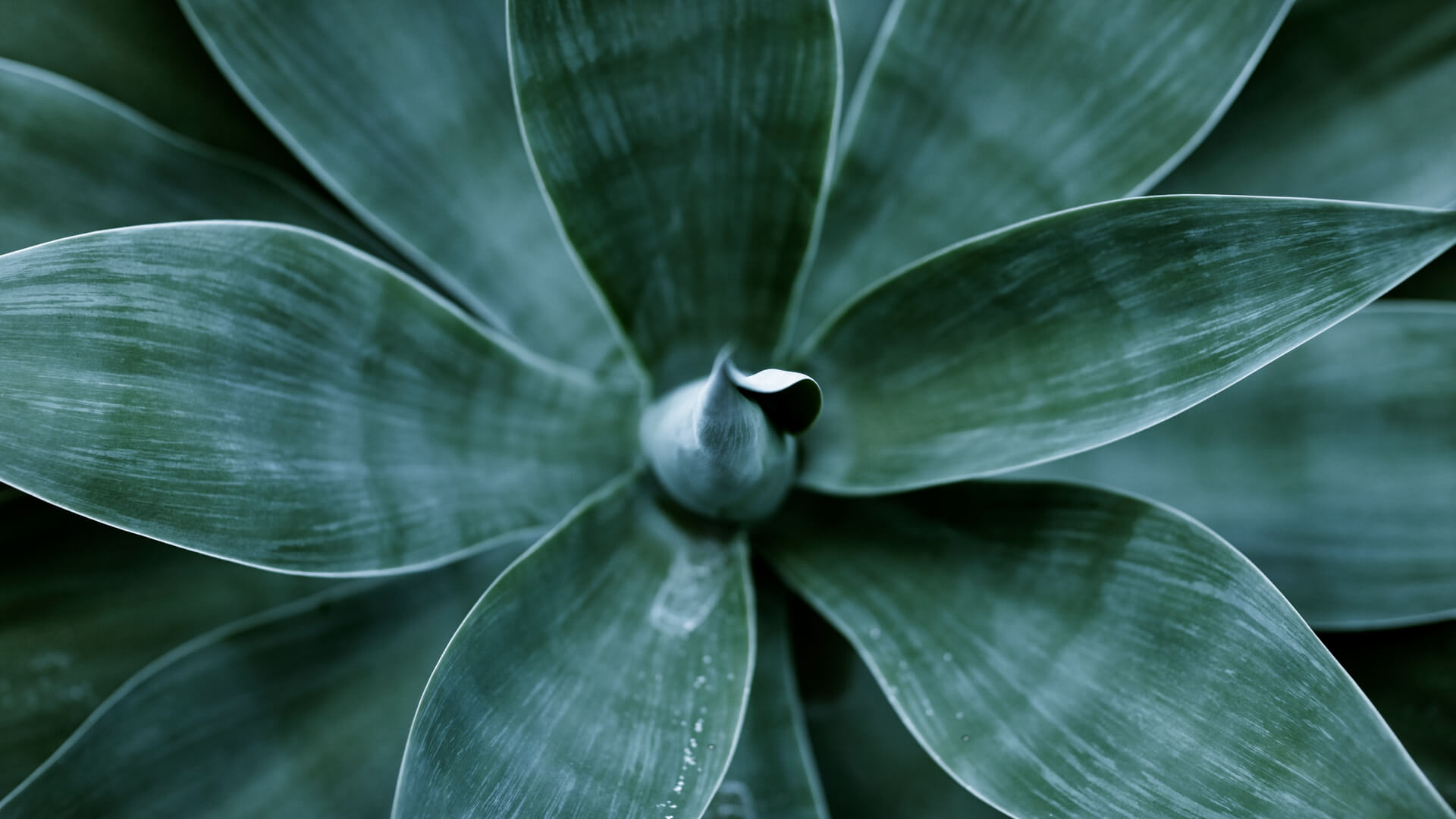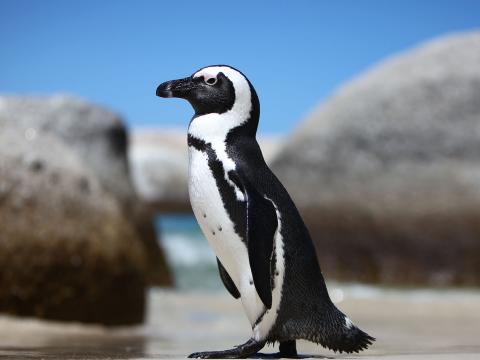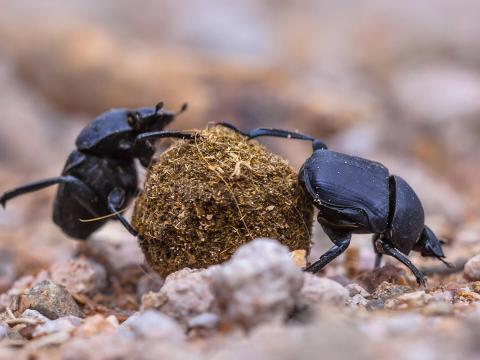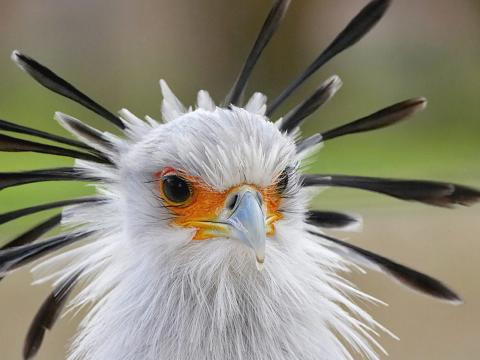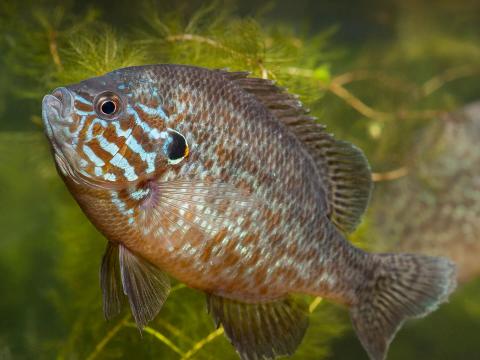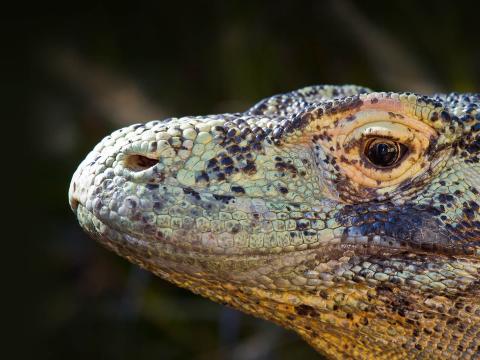Agave
- DIVISION: Magnoliophyta (flowering plants)
- CLASS: Liliopsida (monocotyledons
- ORDER: Asparagales
- FAMILY: Agavaceae (Agave Family)
- GENUS: Agave
- SPECIES: More than 200
OVERVIEW
More than 200 varieties of agaves (ah-GAH-vayz) come from warm regions of the Americas, from the southwestern US and Florida through Central America and intro tropical South America and islands in the Caribbean. Most occur in semiarid habitats, and some have been introduced into similar climates elsewhere and have naturalized.
Agaves grow in low rosettes that range in size from just a few inches to more than 20 feet (6.1 meters) in diameter. They take several years to mature before flowering—just once. When the flower stalk dies, the parent plant dies, too, but typically not before sprouting new “pups” around its base.
CHARACTERISTICS
An agave's stem is typically nonexistent or very short, and its stiff, water-storing leaves grow in a single symmetrical rosette from the base of the plant. Leaf color ranges from yellow-green to blue-green, and some are fabulously variegated. Leaves are typically long and thick, with a sharp spine at the tip. In many varieties, toothed margins make these sword-like leaves even more treacherous.
Once a plant matures, it blooms spectacularly, a tall, thick, flower-bearing spire rising from the center of a rosette. Depending on species and location, flowers are pollinated by bats and moths at night and by bees and sometimes hummingbirds by day. Night-blooming, bat-pollinated varieties typically bear white flowers that emit a fragrance similar to rotting fruit. Seeds are scattered by the wind.
GROWTH PATTERN
In some varieties, such as A. cerulata, the concentric leaves imprint on each other before they unfurl. A close look at the underside of each agave leaf shows the distinct impression of the toothed leaves that surround it.
Some agaves spread easily. Horizontal, underground stems called rhizomes bear pups, also called suckers, which are miniature versions of the parent plant. Pups often appear at the base of an agave, but some send out long rhizomes, and pups may appear 15 feet (4.6 meters) from their parent plant. Eventually a pup will grow into a full-size plant. Sometimes when a parent plant flowers and dies, tiny bulbils grow along the flower spike, at the base of each dry flower. They eventually fall off, and some may take root.
Most flower spires stand up straight, but in the foxtail agave A. attentuata the heavy flower spire bends toward the earth in a characteristic form that gives this plant its common name.
CULTIVATION
All agaves need plenty of light and just enough—but not too much—water. Some small varieties grow well in pots or containers in a sunny windowsill. Other giant varieties need lots of room to grow. If you plant an agave, you'll be able to enjoy watching this long-lived perennial grow and eventually flower, but be aware that certain cultivars are known for sending out pups, something that you may—or may not—want in your garden. Certain species, such as foxtail agave A. attentuata and octopus agave A. vilmoriniana are prized in home gardens because they don't have the toothed leaves or dagger-like spines that characterize many of their relatives.
USES
Agaves are popular landscape plants and potted plants, but they have other uses as well. There is archeological evidence that humans have used agaves for at least 9,000 years, baking the leaves in pits for food and using the fibers and stalks to make everything from rope to clothing to weapons. In some places prickly agaves are planted to create impenetrable, living fences.
Some agaves are grown commercially, too. Sisal plants A. sisalana are grown commercially for the plant fibers in their leaves. This crop is grown mostly in Brazil, Tanzania, Kenya, Madagascar, and China. Sisal fiber is durable and stretchable. It's used to make carpet fiber, twine, rope, and paper products, among other things. Agave syrup (also called agave nectar) is a high-fructose sweetener that comes from any of several agave varieties. It is sometimes substituted for sugar or honey in recipes.
Perhaps the best-known use of agave is for making tequila, the alcoholic beverage popular in margarita cocktails. Tequila is produced from the fermented and distilled juices of the blue agave A. tequilana, native to Mexico. Mezcal, another distilled alcoholic beverage, is made from of any of several agaves native to Mexico.
CONSERVATION
Of the 200 or so varieties of agaves, nearly three-quarters are endemic to Mexico: they occur naturally nowhere else.
A. caymanensis, found only on the Cayman Islands, is endangered, according to the IUCN. Fires set to clear land for agriculture have spread and killed these agaves, which are not fire-adapted. An invasive weevil that has plagued similar habitat on nearby islands is a potential threat, as well.
Certain varieties are endangered due to overcollection for the ornamental plant trade. Two species, A. arizonica and A. parviflora, are listed on CITES Appendix I, and the Queen Victoria agave A. victoria-reginae is on Appendix II. Several are protected in the states in which they occur.
Populations of the long-nose bats that are the main pollinators of certain Mexican agaves—including A. tequilana—are in decline. The greater long-nosed bat Leptonycteris nivalis is endangered, mostly due to roosting site disturbances and loss of food sources. When pollinators are endangered, plants populations suffer, too.

